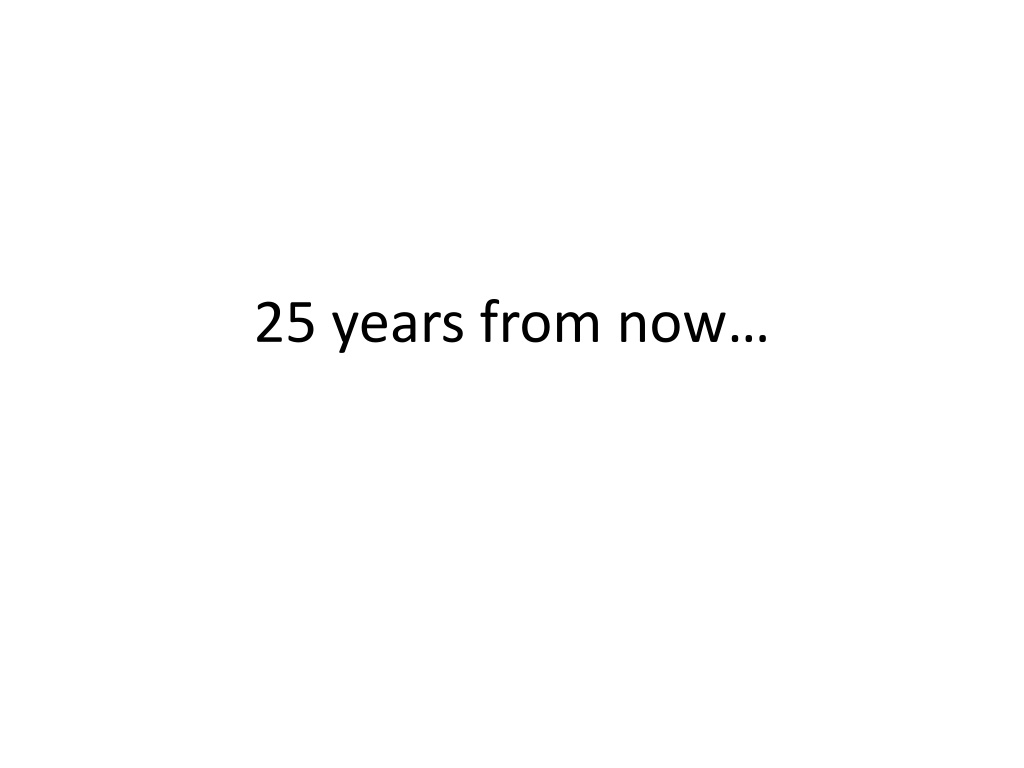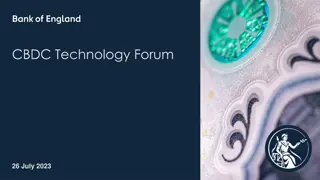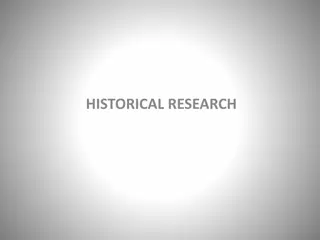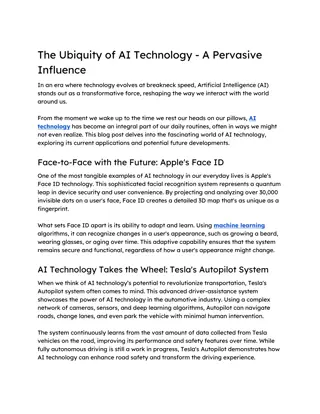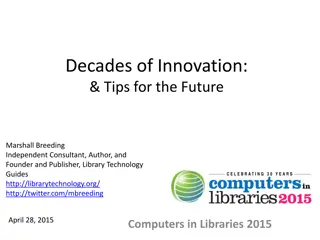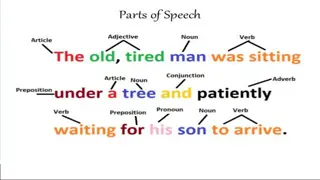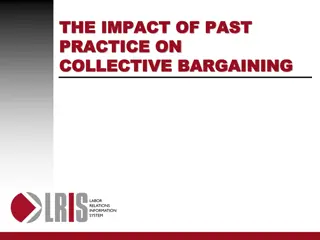A Glimpse into the Past and Future of Technology
Exploring the evolution of technology over the past 25 years, from clunky mainframes and desktop computers to the rise of smartphones, tablets, and cloud computing. The progression of information dissemination from paper-based to digital archives has fundamentally changed society's reliance on technology. The future remains uncertain as current elements will surprise, confuse, and astound in their innovative assembly.
Uploaded on Sep 22, 2024 | 0 Views
Download Presentation

Please find below an Image/Link to download the presentation.
The content on the website is provided AS IS for your information and personal use only. It may not be sold, licensed, or shared on other websites without obtaining consent from the author.If you encounter any issues during the download, it is possible that the publisher has removed the file from their server.
You are allowed to download the files provided on this website for personal or commercial use, subject to the condition that they are used lawfully. All files are the property of their respective owners.
The content on the website is provided AS IS for your information and personal use only. It may not be sold, licensed, or shared on other websites without obtaining consent from the author.
E N D
Presentation Transcript
What if the next 25 years saw as much in the way of technology change as the last 25 years?
25 years ago, in 1989 The battle of the mainframes: DEC 9000 introduced in October for a cool million dollars, designed to compete with IBM s System/390 Over in desktop computingland Intel release the 80386DX, clocking at 33Mhz with a 32 bit architecture Apple release a portable system, the Macintosh Portable, competing with similarly massive weighty offerings from Toshiba and IBM
Back then The user interface to computers was clunky and computer- driven The first of the visual desktop metaphor systems were appearing, but they were clunky and geekish Word Processing and spreadsheets drove technology usage Computing was a still a luxury, but had escaped from heavily conditioned environment with dedicated attendants and specialized operators into a luggable personal use device Technology was selectively used to facilitate the production of information, but our society at the time still relied heavily on paper, photocopiers, the postal system and fax machines to disseminate it.
25 years of technology later The computer mainframe is extinct The desktop computer is a dying breed Laptops are also on the way out It s all about smart phones and tablets Data communications is now abundant Computation and storage is now being abstracted into abundant clouds Our archives of information have largely been digitized Our society relies acutely on technology to amass and disseminate information
I dont have a clue! Much of the elements of our future are with us now, but the way they will be assembled into artifacts will continue to surprise, confuse and astound us
Virtualization We ve seen already that hands and eyes limit the extent to which human/system interfaces can be shrunk in size Maybe we just won t need dedicated computing devices any more So maybe we head straight down the Microsoft gesture / Google glasses path and rely increasingly on projections and interacting within a virtualized world of information processing If you want an example, think about the the Ship UI in District 9
Information Models We re never sure whether to create massive data repositories (just in case) or to smear data over millions of primary data sources (just in time) I m not sure that we will make up our minds in the next 25 years either But whether its aggregated or smeared we can expect a whole lot more of it!
So Where are some likely destinations to illustrate where we are headed over the next 25 years?
The Optimist Increasing access to information engenders a more critical citizen who is aware of choices and consequences Information and communications is an abundant commodity: accessible, plentiful and pervasive Much of the mechanics of the world is automated, and the results are customized to match the needs of each consumer
The Optimist The changes we will be looking for over this period are to transform our information technology platform from smart into wise tell me what you know is unhelpful tell me exactly what I need to know, right here and right now can be amazingly enabling for each of us
But if there is a bright side of the future There is also a darker side
The Privatization of the Public Space Much of what was achieved in the last 25 years has been due to an outstanding triumph of open technology and introduction of market forces into previously restricted and regulated activities Its unclear how this is sustained into the future Which leads to concerns over increasing private encroachment into traditional open public spaces
Owning History Who owns our history? Our public institutions that operate our archives in the public interest? or The enterprise that digitized these archives and now uses aggressive IPR frameworks to assert control over access? or The enterprise that created the private search index across these archives and now acts as a gateway to access
Owning Our Money Are we becoming the product rather than the consumer? Who owns my credit card when It will only permit me to purchase approved products It passes all my transaction data to a cloud for subsequent processing and analysis It will disclose my movements and contacts to anyone who wants to buy it from the card issuer?
Owning Us Are we becoming the product rather than the consumer? Who owns my smart device when: It will only run approved applications It will only permit me to purchase approved products It passes all my data to a cloud for subsequent processing and analysis It will disclose my movements and contacts to anyone who wants to buy it from the device s controller
The Pessimist In 25 years: Personal privacy is a quaint historic notion Individual choice is illusory Picketty persists: technology is exploited to empower the few at the expense of the many Information-centric corporate structures assume dominant social powers, at the expense of the traditional nation state Social democracy is a quaint historic notion in the face of unprecedented social inequities Is this this now time for Soylent Green?
